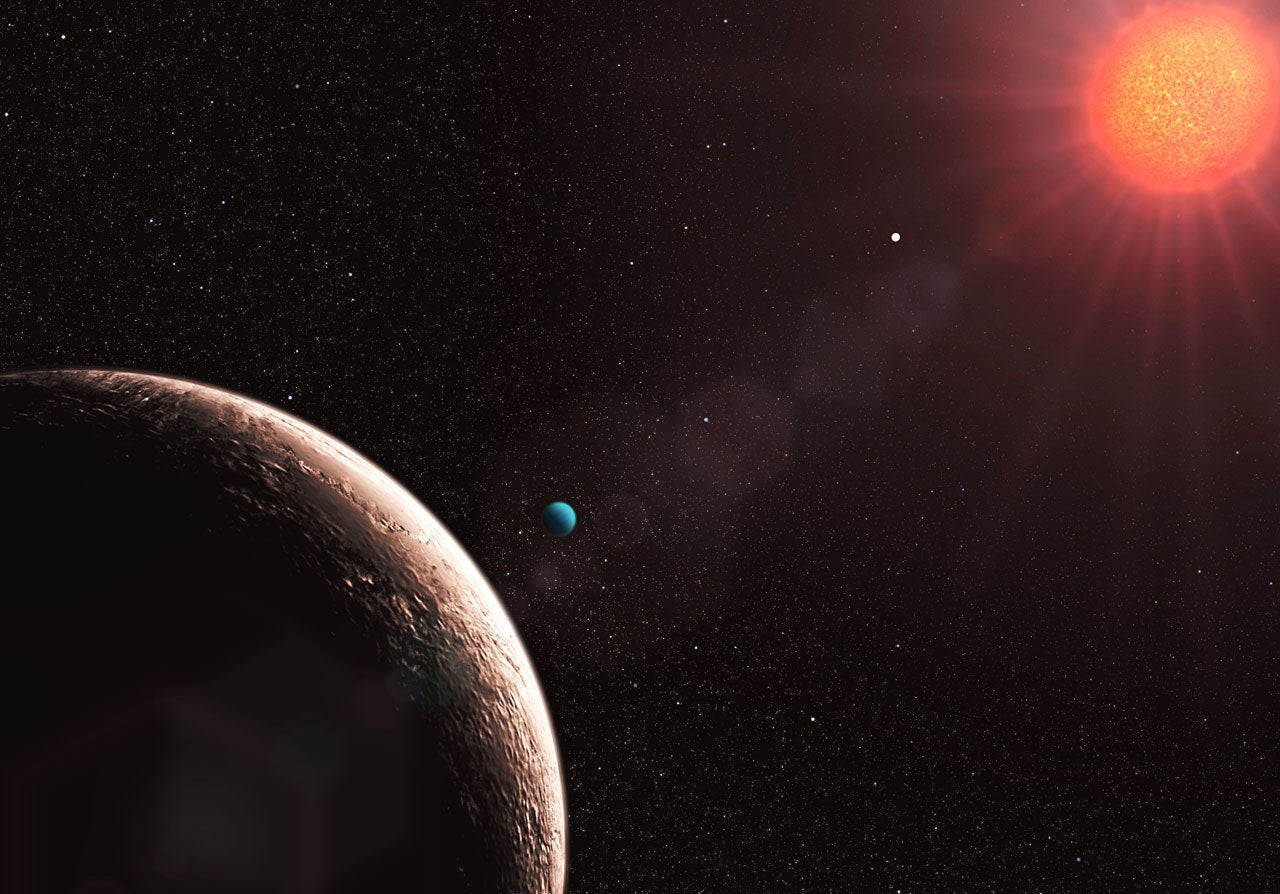
I remember well the thunderous moment in 1992 when astronomers discovered the first planet outside our solar system. Aleksander Wolszczan and Dale Frail announced their finding of a so-called pulsar planet, PSR B1257+12, orbiting a millisecond pulsar, a rapidly spinning neutron star, lying 2,300 light-years away in the constellation Virgo. All of the sudden the sense was that the universe had expanded, perhaps a little bit in the same way that occurred when Hubble discovered the nature of galaxies way back in 1923.
Thanks to clever thinking, improving technology, and orbiting telescopes, an avalanche of extrasolar planet discoveries followed. Another seminal moment occurred in 1995 when astronomers Michel Mayor and Didier Queloz announced their detection of the planet 51 Pegasi b, the first known exoplanet orbiting a sunlike star. Countless years of suspecting that Earth, the Sun, and our solar system were a whole lot less special than most of human history had concluded were finding affirmation.
By now the tally of exoplanets amounts to more than 5,500 planets discovered in more than 4,000 separate planetary systems. And the count rises week by week and month by month as astronomers sift through more data.
But of course much of this curiosity about planetary systems near us in the Milky Way Galaxy centers on the big question: Could other worlds host life?
Science suggests life is likely on other plants
Of course most scientists now believe the answer should be a resounding yes. Spectroscopy tells us that chemistry is uniform throughout the cosmos. Exoplanet surveys confirm what has been suspected for many years, that the formation of planets around star systems should be very commonplace, if not universal. We know that the stuff of life, organic chemistry, is abundant throughout the nearby cosmos. For example, the only sample from a comet returned to Earth, by the Stardust mission in 2006, contained the simplest amino acid, glycine — one of the types of the building blocks of life.
And yet with the mounting evidence of how life probably gets going in the universe, we still have only one known example of it — right here on Earth.
But among the several thousand exoplanets, should we expect that some of them would be more likely to host life than others? In a word, yes. The area of studying exoplanets and imaging what they may be like up close is a booming cottage industry within the worlds of galactic astronomy and planetary science.
Exoplanets of particular interest
One keeper of these thoughts is Abel Méndez and his team at the University of Puerto Rico at Arecibo. Méndez and collaborators run the Planetary Habitability Laboratory, and operate a web page analyzing the nature of compelling exoplanets.
At present, this research team considers 63 exoplanets of particular interest, taking into account their probable nature and the orbital radii of these worlds, which would likely place them into a so-called habitable zone, where liquid water would exist. (Even after all the weirdo sci-fi movies and shows that have been produced, we still believe that life gets going most easily if it relies on liquid water.)
The Méndez team separates the types of likely-habitable worlds into three basic categories — Subterran (Mars-sized), Terran (Earth-sized), and Superterran (Super Earths or Mini Neptunes).
Further, they consider 24 planets in a “conservative” catalog of potentially habitable exoplanets, because they are likely to have a rocky composition and support surface liquid water. This class includes some interesting examples, including the only Subterran, TRAPPIST-1 d. Also included in this group is Proxima Cen b, which orbits the nearest star to the Sun, a mere 4.2 light-years away.
Aside from TRAPPIST-1 d, all the others in this list are Terrans. The most distant example in this list at present is Kepler-442 b, which lies 1,193 light-years away.
An “optimistic” catalog of potentially habitable exoplanets adds another 39 to the total. This class could host living organisms but is less likely to have a rocky surface composition and also less likely to maintain liquid surface water. This class consists of all Superterrans and includes such examples as Wolf 1061 c, a mere 14 light-years away, and some more distant examples too, such as Kepler-1616 b (2,710 light-years) and Kepler-1638 b (4,973 light-years).
Before truly understanding examples in any science, we invariably go through a big phase of cataloging. This was the case with seashells, bones, mineral specimens, and other natural phenomena. We’re still in the early phases of cataloging with exoplanets, but it’s clear that countless worlds are out there that could host life.
We know that relatively sizeable galaxies like the Milky Way contain several hundred billion stars. We know that at least 100 billion galaxies exist in the cosmos. And if inflation theory is right, which it probably is, then the visible universe is nowhere near the whole universe. Let’s be conservative and say that 10,000 billion billion stars exist in the cosmos. That’s one helluva lotta places for planetary systems. Life should be abundant throughout the cosmos. But the distance scale is also incredibly vast, even among the nearest stars. But that’s a topic for another time. For now, let’s say that we’re in the early days of understanding planetary systems around us, and it’s very likely that many of them have living beings far different than those on Earth.









